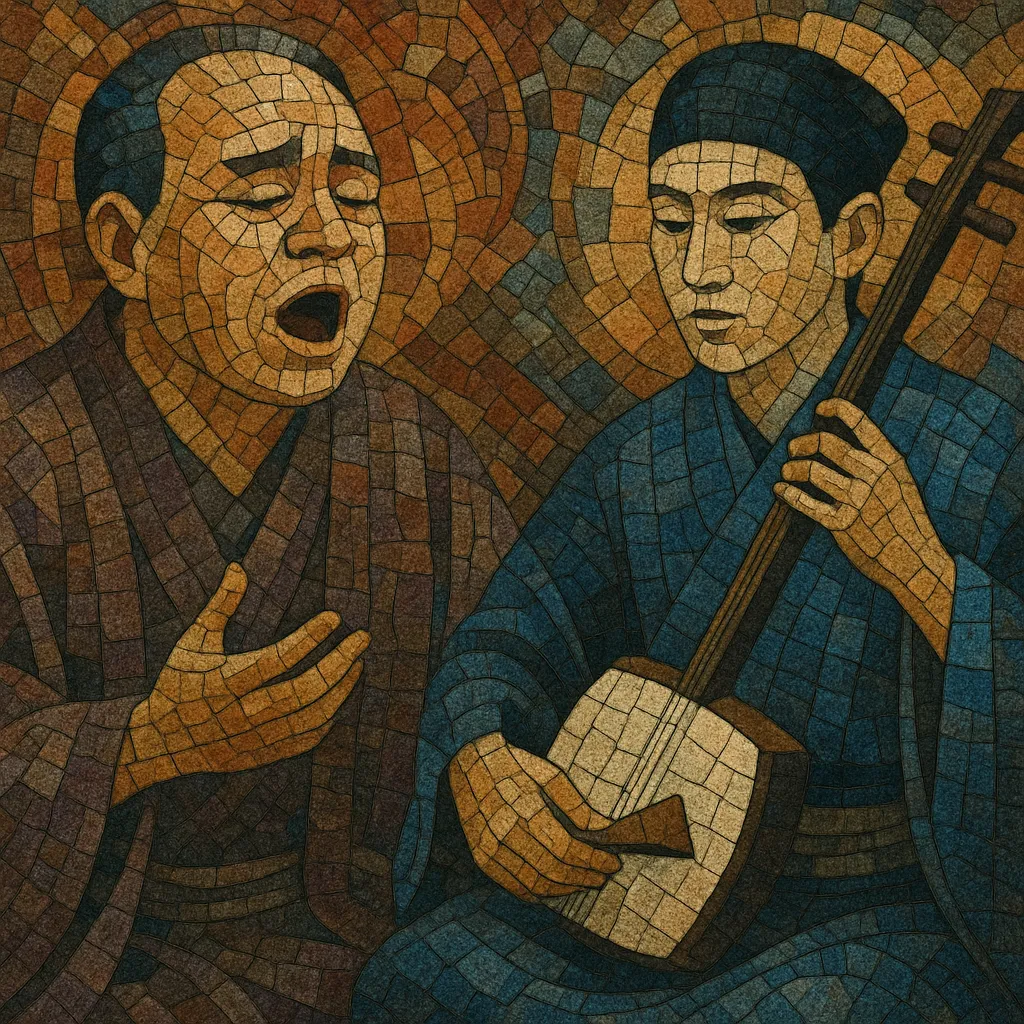Jōruri is a Japanese narrative music-drama tradition in which a chanter (tayū) recites and sings a story to the accompaniment of a shamisen, most famously in bunraku (puppet theater) and also in kabuki. The music shifts fluidly between speech-like recitation and heightened melody, allowing the tayū to voice multiple characters and a third-person narrator.
The best-known style is gidayū-bushi, founded by Takemoto Gidayū in Osaka, which became the standard for bunraku. Jōruri’s musical language employs pentatonic Japanese scales, flexible rhythm and tempo, and a dramatic pacing that follows the aesthetic principle of jo–ha–kyū (introduction–development–rapid finale). Its repertory includes historical epics (jidaimono) and domestic tragedies (sewamono), prized for vivid vocal expression and tightly integrated storytelling.
Jōruri emerged in the late Muromachi to early Edo period as a new shamisen-accompanied storytelling practice. It absorbed techniques from earlier narrative and chant traditions such as heikyoku (biwa-accompanied Heike recitation), Buddhist shōmyō, and the theatrical cadence of Noh. With the rise of the shamisen in the 1500s, storytellers began shaping a distinct dramatic singing/reciting style that audiences would come to call “jōruri.”
In the late 17th century, Takemoto Gidayū formalized gidayū-bushi in Osaka, building a performance system for bunraku in which a single tayū, partnered with a powerful futozao (thick-necked) shamisen, narrated entire plays. The dramatist Chikamatsu Monzaemon supplied landmark scripts, and the jo–ha–kyū arc became central to dramatic pacing. Parallel narrative shamisen schools for kabuki (e.g., Tokiwazu-, Tomimoto-, Kiyomoto-, Shinnai-, and Miyazono-bushi) developed from and alongside the jōruri approach.
Through the Meiji and modern eras, jōruri evolved within professional guilds and iemoto (headmaster) systems. Despite changing popular tastes, it has remained a cornerstone of bunraku and a touchstone for kabuki music. Today, Living National Treasures preserve the tayū and shamisen lineages, and conservatories and troupes in Osaka and Tokyo maintain performance practice, ensuring the repertory’s stylistic integrity and training new generations of artists.


